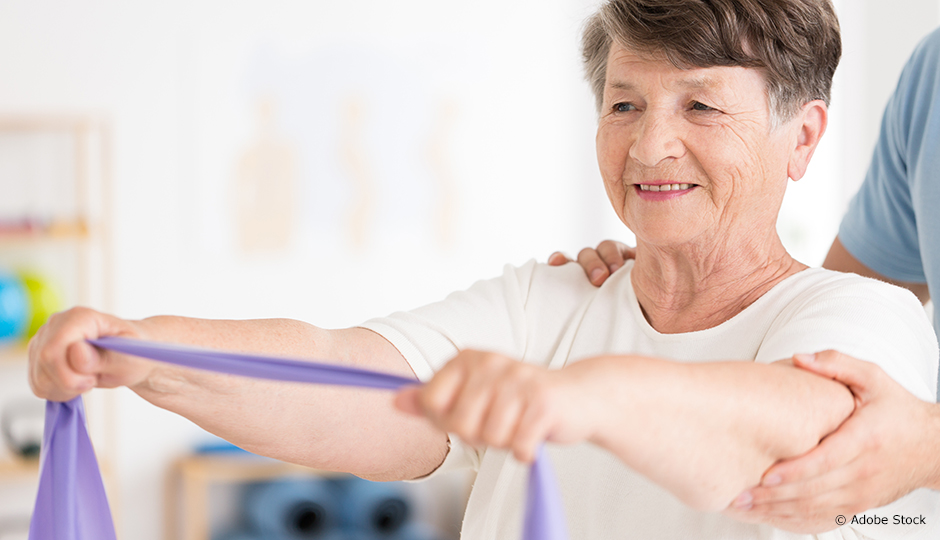Stroke patients who take part in exercise programs to recover arm control have mixed results. Some make significant progress, while others show only limited signs of improvement. To better predict the recovery potential of each individual and provide them with exercises that are better adapted to their condition, Marie-Hélène Milot, professor at the École de réadaptation de l’Université de Sherbrooke and researcher in the Centre de recherche sur le vieillissement, is focused on the communication between the brain and the affected arm.
For a same type of stroke, excitability varies according to the degree to which the pathway is affected.
She relies on transcranial magnetic stimulation (TMS), a method that assesses the excitability of the corticospinal tract—the connection between the brain and spinal cord. For a same type of stroke, excitability varies according to the degree to which the pathway is affected. Based on the results of their TMS, patients are assigned to one of three groups that follow a one-month exercise program of varying intensity depending on the activity of their corticospinal tract. Patients undergo transcranial direct-current stimulation while doing their arm exercises to optimize their efforts: electrodes placed over their motor cortex stimulate the areas of the brain impacted by the stroke.
Preliminary results following transcranial direct-current stimulation already reveal functional improvements in the affected arm of the stroke patients, even those who suffered a stroke several years back. Marie-Hélène Milot, who is also a trained physiotherapist, notes that optimal rehabilitation enables patients to recover and return to their daily lives, increasing their quality of life and autonomy.




